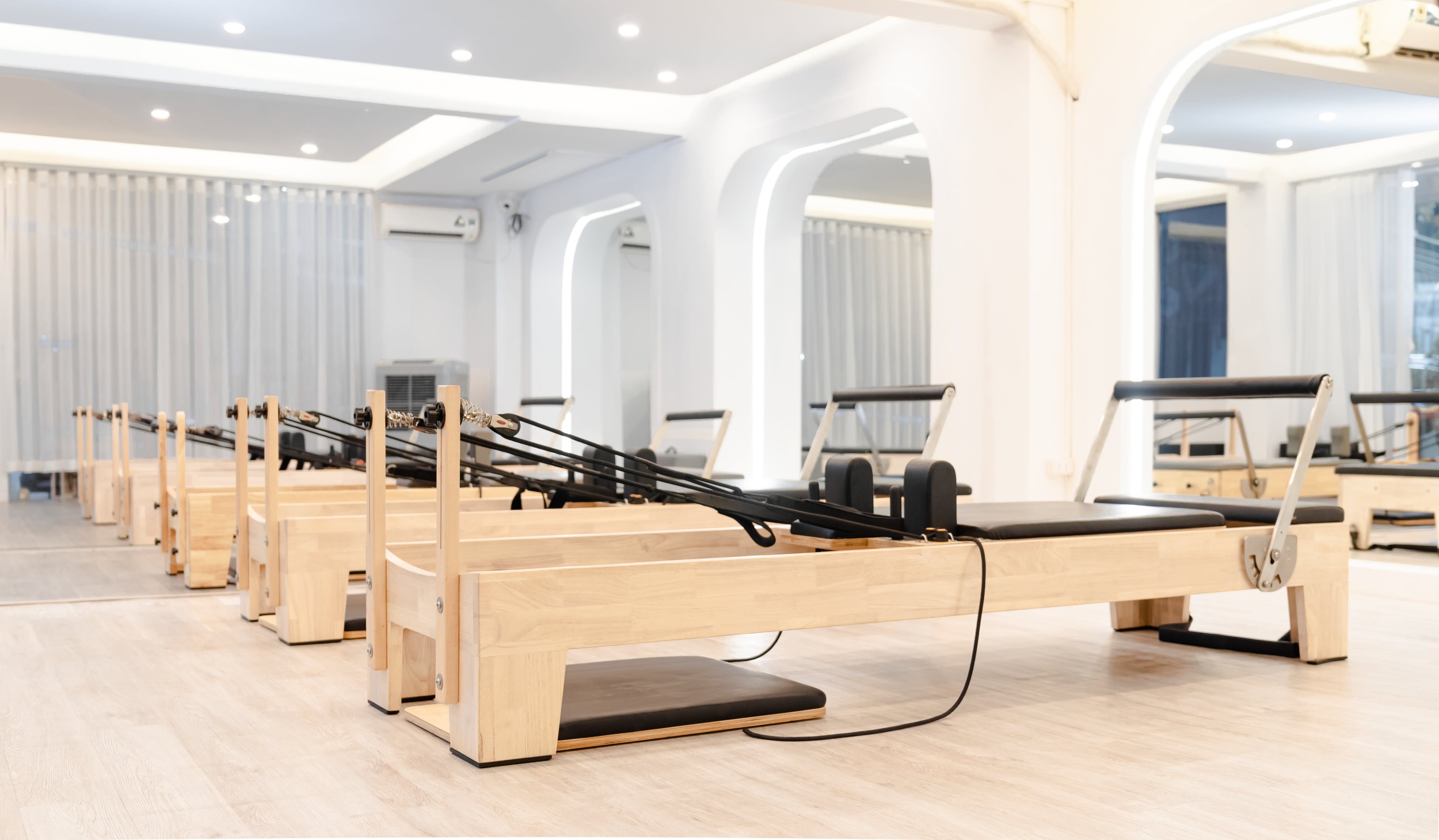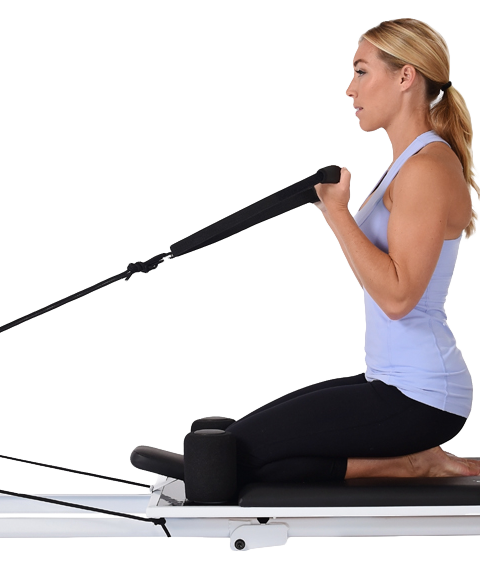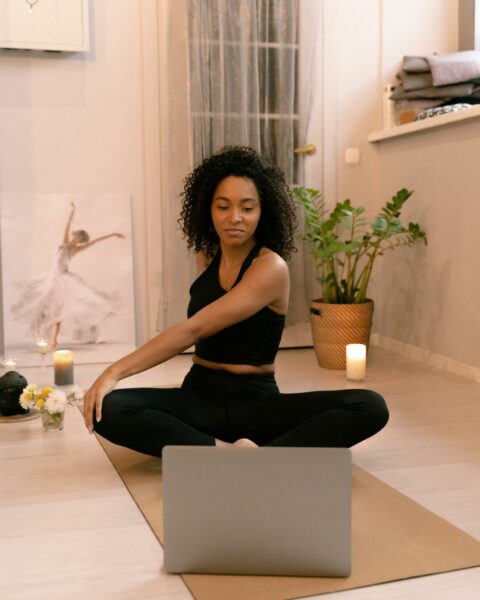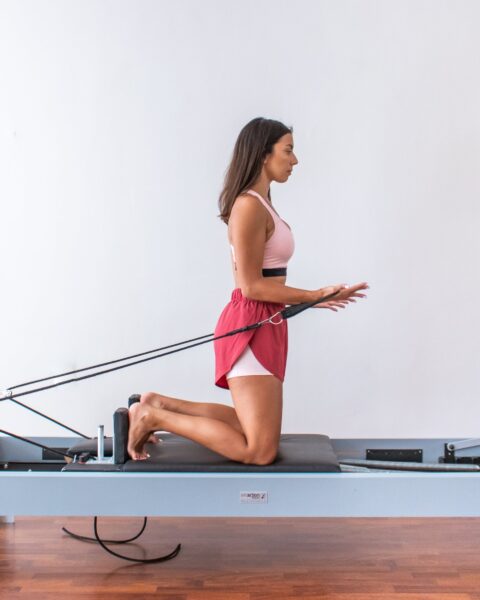In this article, we’ll delve into the world of Pilates, exploring its origins, principles, and costs. We’ll also examine the value it brings, compare it to other fitness regimes, discuss ways to make it more affordable, and explore its future. So grab your yoga mat, sit back, and let’s uncover the truth behind the price tag of Pilates.
Why is Pilates so Expensive? Reasons Explained
Understanding the Basics of Pilates
Before we can truly uncover the reasons behind the expense of Pilates, it’s essential to understand its basics. Developed by Joseph Pilates in the early 20th century, the Pilates method aims to strengthen the body while improving flexibility and posture.
Pilates focuses on the core, often called the powerhouse, which includes the abdominal, pelvic, and back muscles. By engaging these muscles, practitioners aim to create a strong foundation for movement and improve overall body alignment.
The Origins of Pilates
Joseph Pilates, a German-born fitness enthusiast, developed his exercise system during World War I. Seeking a way to rehabilitate injured soldiers and improve their overall strength, he combined elements of yoga, martial arts, and gymnastics to create what we now know as Pilates. Over time, this method gained popularity and evolved into the practice we see today, loved by people across the globe for its holistic approach to fitness.
During World War I, Joseph Pilates was interned in a camp for enemy aliens in England. It was during this time that he began to develop his exercise system, using the limited resources available to him. Pilates used bed springs and other materials to create resistance for his exercises, which later became the foundation of the Pilates equipment (e.g. the Reformer Pilates, Cadillac and Chair) we may find in a Pilates studio today.
After the war, Pilates moved to New York City and opened a studio, where he taught his method to a diverse range of clients, including dancers, athletes, and everyday individuals looking to improve their fitness. His unique approach to exercise, focusing on the mind-body connection and the importance of core strength, quickly gained popularity.
The Core Principles of Pilates
Central to the practice of Pilates are its core principles. These principles guide practitioners in their journey towards physical and mental well-being. They include concentration, control, centering, precision, breath, and flow. Each principle has its unique role, contributing to the effectiveness of Pilates as a transformative exercise regime.
Concentration is a key principle in Pilates, as it requires practitioners to focus their attention on each movement and engage their mind in the process. By maintaining a high level of concentration, individuals can ensure that they are performing the Pilates exercises correctly and effectively.
Control is another fundamental principle of Pilates. It emphasizes the importance of maintaining control over every movement, ensuring that each exercise is executed with precision and intention. This principle helps individuals develop a strong mind-body connection and avoid any unnecessary strain or injury.
Centering is a core principle that refers to the focus on the powerhouse, or the core muscles of the body. By centering their movements around the core, individuals can create a stable and strong foundation for all other movements. This principle helps improve overall body alignment and posture.
Precision is a crucial aspect of Pilates, as it emphasizes the need for accuracy in every movement. Practitioners strive to perform each exercise with precision, paying attention to the alignment of their body and the execution of each movement. This principle ensures that individuals get the most out of their Pilates practice and avoid any unnecessary strain or injury.
Breath is an essential component of Pilates, as it helps individuals connect with their bodies and maintain a steady rhythm throughout their practice. Proper breathing techniques are taught in Pilates to enhance relaxation, focus, and overall well-being. By incorporating breath into each movement, individuals can enhance the mind-body connection and experience a deeper sense of relaxation and control.
Flow is the final core principle of Pilates, emphasizing the smooth and continuous flow of movements. Practitioners aim to transition seamlessly from one exercise to another, maintaining a sense of fluidity and grace. This principle helps individuals develop a sense of flow in their daily lives, promoting a more balanced and harmonious approach to movement and overall well-being.
The Costs Involved in Pilates
Now let’s tackle the elephant in the room: the costs of Pilates. It’s true that Pilates classes can be more expensive than other fitness classes, but there are valid reasons behind this higher price tag. Let’s break it down.
Pilates is a form of exercise that focuses on strength, flexibility, and overall body awareness. It is known for its precision and attention to detail, which requires specialized equipment and highly trained Pilates instructors. While the initial investment may seem steep, the benefits and results that Pilates offers make it worth considering.
Equipment and Infrastructure Costs
Pilates often requires specialized equipment, such as reformers, Cadillac machines, and barrels. These apparatuses are designed to support and challenge the body in ways that traditional exercise equipment cannot. The investment in such high-quality equipment can significantly impact the overall cost of Pilates classes or sessions.
Reformers, for example, are versatile machines that provide resistance through a system of springs and pulleys. They allow for a wide range of Pilates exercises that target specific muscle groups and promote proper alignment. The cost of maintaining and upgrading this equipment is factored into the overall price of Pilates classes and, more specifically, reformer pilates classes.
In addition to the equipment, the studios also require a suitable infrastructure to create a conducive environment for practice. This includes spacious and well-ventilated rooms, comfortable flooring, and amenities such as changing rooms and showers. These facilities contribute to the overall experience and comfort of the clients, but they also come with maintenance and operational costs.
The Costs of Becoming a Trained and Certified Pilates Instructor
Pilates instructors undergo extensive training and certification programs to ensure they have the knowledge and skills necessary to guide students safely and effectively. These programs can be rigorous and involve courses, apprenticeships, and practical evaluations. The costs associated with Pilates instructor training and certification are also a factor in the overall expense of Pilates.
During their training, Pilates teachers learn about anatomy, physiology, and biomechanics to understand how the body moves and functions. They also study the principles and techniques of Pilates, including proper alignment, breath control, and movement sequencing. This comprehensive training equips them with the expertise to address individual needs and provide personalized instruction.
Furthermore, Pilates instructors must maintain their certification by attending continuing education courses and workshops. This ongoing commitment to professional development ensures that they stay up-to-date with the latest advancements in Pilates and can offer the best possible guidance to their clients.
While the costs associated with Pilates may seem high, it is important to consider the value that it brings. The specialized equipment, infrastructure, and highly trained Pilates teachers all contribute to a safe and effective Pilates experience. The investment in Pilates can lead to improved strength, flexibility, posture, and overall well-being. So, if you’re looking for a workout that goes beyond the ordinary, Pilates may be worth the investment.
The Value Proposition of a Pilates
Now that we understand the costs, let’s explore the value Pilates brings to the table. It’s important to remember that Pilates offers more than just a workout; it’s a comprehensive approach to physical and mental wellness.
When it comes to health and fitness benefits, Pilates is renowned for its ability to improve core strength, flexibility, and posture. By focusing on controlled movements and proper alignment, Pilates helps individuals develop a strong and stable core, which is essential for overall strength and stability. The emphasis on flexibility in Pilates also helps to improve range of motion in joints and muscles, allowing for greater ease of movement in daily activities.
In addition to its physical benefits, Pilates also promotes better balance and coordination. Through the use of precise and controlled movements, Pilates helps individuals develop a heightened sense of body awareness and control. This can be particularly beneficial for athletes looking to improve their performance or individuals recovering from injuries, as it helps to retrain the body’s movement patterns and restore balance.
One of the key advantages of Pilates is its ability to prevent future injuries. By addressing muscle imbalances and strengthening the body’s core, Pilates helps to correct postural alignment and improve overall body mechanics. This not only reduces the risk of injury during physical activities but also promotes better posture and alignment in everyday life.
Aside from its physical gains, Pilates offers a reprieve from the stress and demands of daily life. The focus required during a Pilates session, combined with the mind-body connection fostered by the practice, can promote mental clarity and relaxation. In a world filled with constant distractions and pressures, investing in activities that enhance mental wellness is priceless. Pilates provides a space for individuals to disconnect from the outside world and reconnect with their bodies, allowing for a sense of calm and tranquility.
Furthermore, the practice of Pilates can also be a form of stress relief. The rhythmic and flowing movements, combined with deep breathing techniques, help to release tension and promote a sense of relaxation. This can have a profound impact on overall well-being, as stress and anxiety are known to contribute to a wide range of physical and mental health issues.
Comparing Pilates to Other Fitness Classes
Is Pilates worth the higher price tag when compared to other fitness options? Let’s analyze the costs and value of Pilates in comparison to two popular alternatives: yoga and gym memberships.
Cost Comparison with Yoga and Gym Memberships
When it comes to cost, it’s important to consider the factors that contribute to the price of each fitness option. While yoga classes can also be pricey, they often require less specialized equipment and infrastructure. This means that yoga studios can offer classes at a lower cost compared to studios, which typically have specialized equipment such as reformers, cadillacs, and chairs. On the other hand, gym memberships may provide access to various fitness equipment and classes at a lower cost overall, but they may not offer the same level of individualized attention and focus on technique that Pilates studios provide.
However, the value of Pilates lies in its unique focus on core strength, posture, and flexibility, making it an excellent complement to these other fitness routines. While yoga and gym memberships may offer their own benefits, Pilates offers a specialized approach that targets specific muscle groups and aims to improve overall body alignment. This can lead to improved posture, reduced risk of injury, and increased overall strength and flexibility.
Ultimately, the decision of whether Pilates is worth the higher price tag compared to other fitness options depends on individual preferences and goals. Some individuals may prioritize the affordability and accessibility of yoga or gym memberships, while others may see the value in investing in Pilates for its targeted approach and potential long-term benefits.
Value Comparison of Pilates Exercises with Other Exercise Forms
While Pilates may have a higher price tag compared to other exercise forms, it offers a distinct value proposition. Its emphasis on core strength, posture, and body alignment sets it apart from high-intensity workouts or cardio-focused exercises. While these forms of exercise have their own benefits, Pilates provides a unique opportunity to focus on the foundational aspects of fitness.
For individuals seeking a holistic approach to fitness and well-being, the value of Pilates extends far beyond its price. Pilates can help improve body awareness, enhance muscular control, and promote overall mind-body connection. By targeting the core muscles, Pilates can also improve stability and balance, which can be beneficial for individuals of all fitness levels.
Furthermore, Pilates can be particularly valuable for individuals recovering from injuries or dealing with chronic pain. Its low-impact nature and emphasis on proper alignment make it a safe and effective option for rehabilitation and strengthening weakened muscles.
When comparing Pilates to other exercise forms, it’s important to consider the specific goals and needs of each individual. While high-intensity workouts and cardio-focused exercises may be more suitable for individuals looking to burn calories and improve cardiovascular fitness, Pilates offers a unique approach that focuses on building a strong foundation and improving overall body mechanics.
In conclusion, while Pilates may come with a higher price tag compared to other fitness options, its value lies in its specialized approach to core strength, posture, and flexibility. By targeting specific muscle groups and promoting proper body alignment, Pilates offers a holistic approach to fitness and well-being that can have long-lasting benefits.
Ultimately, the decision of whether Pilates is worth the investment depends on individual preferences, goals, and the desire for a comprehensive and targeted fitness routine.
Ways to Make Pilates Classes More Affordable
If the cost of Pilates seems prohibitive, fear not. There are ways to make this transformative practice more affordable without compromising on quality or effectiveness.
Group Classes vs. Private Sessions
Attending group Pilates classes is generally more cost-effective than private sessions. In a group setting, the Pilates instructor can still provide guidance and correction, ensuring a safe and effective workout for all participants. Group classes also offer a supportive community atmosphere, which can enhance motivation and enjoyment.
Online Pilates Platforms and Their Costs
Another option that has gained popularity in recent years is online Pilates platforms. These platforms offer pre-recorded or live-streamed classes, allowing individuals to practice Pilates from the comfort of their own homes. Online platforms often offer a range of pricing options, making Pilates more accessible to those on a tighter budget.
The Future of Pilates: Is It Worth the Investment?
As we gaze into the crystal ball and explore the future of Pilates, one question remains: is it worth the investment? With trends in the fitness industry constantly evolving, it’s essential to consider the long-term benefits and return on investment (ROI) of Pilates.
Trends in the Fitness Industry
The fitness industry is evolving, and Pilates is adapting to meet the changing demands. With the rise of virtual fitness and hybrid workout options, Pilates studios and instructors are finding innovative ways to bring the practice to an ever-widening audience. Investing in Pilates today means being part of a growing movement that is likely to continue evolving and adapting to future trends.
Long-term Benefits and ROI of Pilates
When evaluating the investment in Pilates, it’s crucial to consider the long-term benefits. Pilates promotes overall health, improves posture, and enhances physical performance. By investing in Pilates today, individuals can potentially prevent injuries and costly healthcare expenses in the future. The ROI of investing in one’s well-being is immeasurable.
So, why is Pilates so expensive? It’s a valid question, considering the price tag associated with Pilates classes and sessions. However, when we delve deeper into the origins, principles, costs, value, and future of Pilates, we uncover a story that goes beyond the numbers.
Pilates is more than just an exercise regime; it’s a journey towards physical and mental well-being. It’s an investment in one’s health and future. And sometimes, the best investments are the ones that have the most significant impact on our lives.









